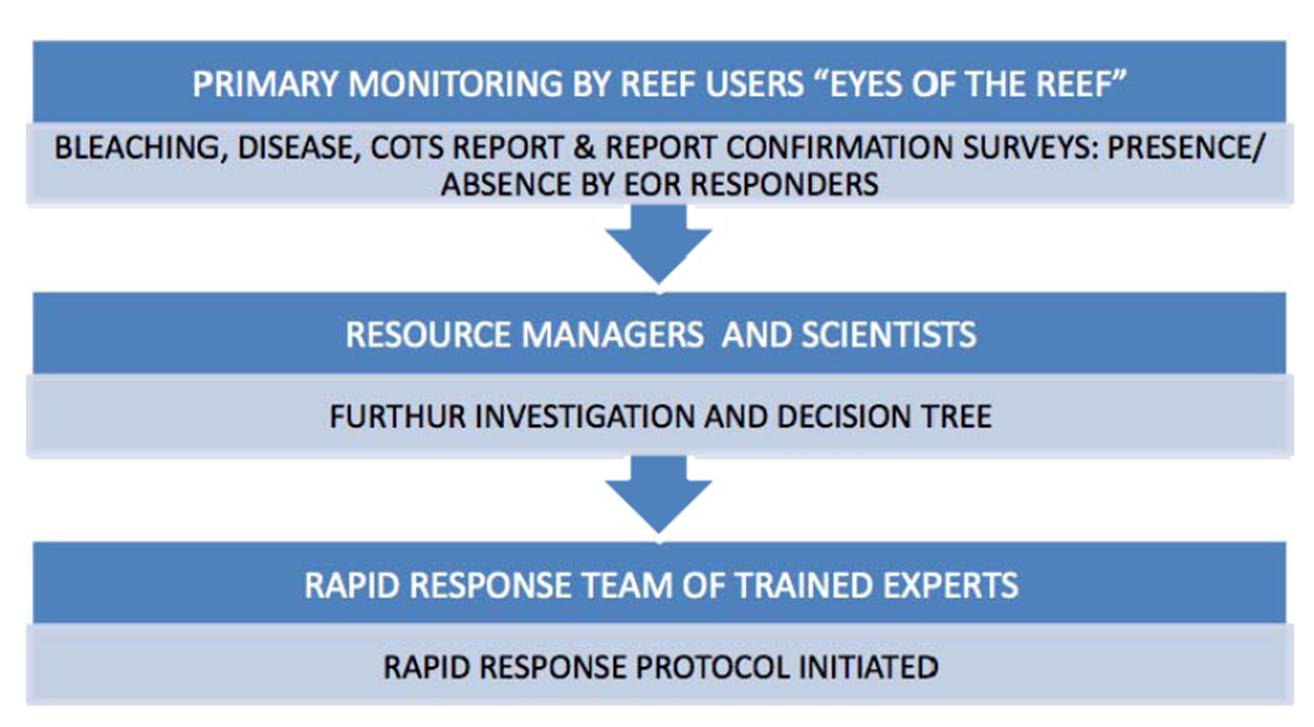Rapid Response Contingency Plan (RRCP)
The Rapid Response Contingency Plan (RRCP) provides the Department of Natural Resources (DLNR), Division of Aquatic Resources (DAR) and its partners with a plan to respond to unusual events including coral disease, coral bleaching, and Crown-Of-Thorn Starfish (COTS) outbreaks. It was developed through several workshops, which were held in 2007-08 and included managers, scientists, NGOs, and ocean users.
Download a copy of the 2008 plan: HawaiisRRCP
The framework that resulted includes three tiers of response levels:
- The first tier is a public report or primary observation. A major component of the first tier is the Eyes of the Reef (EOR) Network. Primary observations may also come from the use of remote sensing alerts, such as the NOAA Coral Reef Bleaching Alert System, or management agency monitoring surveys.
- The second tier is the primary assessment of the event whereby trained personnel conduct an in-water survey to confirm or negate an event is taking place.
- The third tier is follow-up monitoring of an event, and if appropriate, management action to facilitate the affected reef’s recovery.
Major Components of the Plan:
Rapid Response Contingency Plan Coordinator
Within the RRCP, protocols were developed to allow managers to respond to outbreak events in a timely and efficient manner. This included a Rapid Response Plan Coordinator, who is tasked with coordinating each response, using RRCP protocols.
Acting RRCP Coordinator: Anne Rosinski ([email protected])
Management Response Team
The Rapid Response Plan Coordinator is responsible for assembling a Management Response Team for certain events, who will review data and determine if a rapid response should be initiated. The Management Team will also meet to discuss the findings of the Rapid Response Team and to discuss management actions, follow-up monitoring, and communicating information to decision-makers, stakeholders, and the public.
Rapid Response Teams
If a more in-depth assessment is warranted, the Coordinator will facilitate the assembly of a Rapid Response Team. Each island-specific Rapid Response Team is tasked with collecting all relevant biological information, collecting samples, and reporting of the initial findings to the Management Response Team. They also conduct any follow-up monitoring and make recommendations as to best practices for allowing a rapid recovery of the reef following the event.
